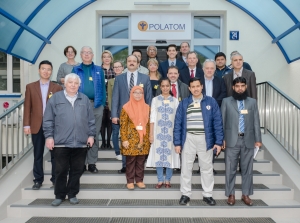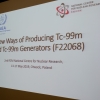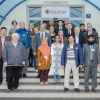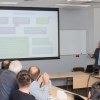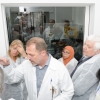New methods of technetium production – a meeting of IAEA’s programme
2019.05.20 14:36 - Marek Pawłowski
Between 13th and 17th of May the second meeting on coordinating research of new 99mTc production methods and 99mTc generators was held in Świerk as a part of the programme of the International Atomic Energy Agency. Guests from several countries from five continents have discussed various aspects related to satisfying the needs of patients all over the world for this basic isotope in nuclear medicine.
Technetium-99m is the most widely used isotope for medical imaging. Usually, it is produced by eluting from the 99Mo/99mTc generators delivered to hospitals. In those generators the short-lived 99mTc isotope (with the half-life approx. 6 h) is generated by radioactive decay of molybdenum-99 (with a much longer half-life of 66 h). Research nuclear reactors have been the main source of 99Mo for decades. Because of systematic worldwide decrease in the number of research reactors, in which the production of this radionuclide is possible, alternative methods of 99Mo production or direct production of 99mTc are investigated. One of those is the photonuclear reaction 100Mo(γ, n)99Mo with gamma radiation generated in electron accelerator. This method is an alternative for production of 99Mo through uranium-235 fission, but its efficiency is much lower, which results in low specific activity (LSA) of 99Mo. This requires efficient methods of separating 99mTc from the excess of molybdenum and/or utilizing new adsorbents, which are selective for 99mTc or have a large adsorption volume for Mo.
The subject of the meeting is directly related both to current operation of POLATOM Radioisotope Centre, and to the CERAD, cyclotron laboratory, which is under construction in NCBJ, as well as to the programme of RadFarm interdisciplinary doctoral studies. The attendees of the meeting also included researchers from NCBJ and other institutions dealing with physics and electron acceleration technology.
The meeting agenda also included the guests’ visit to the Maria reactor and POLATOM’s laboratories. The guests had a chance to see the construction site of the CERAD laboratory and become familiar with the work progress, as well as with the planned potential of the new infrastructure. The next part of the visit were the NCBJ’s laboratories of accelerating structures.





